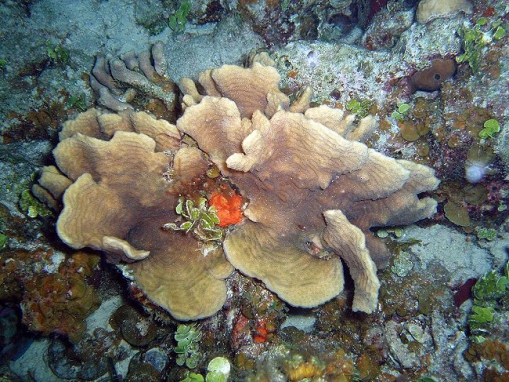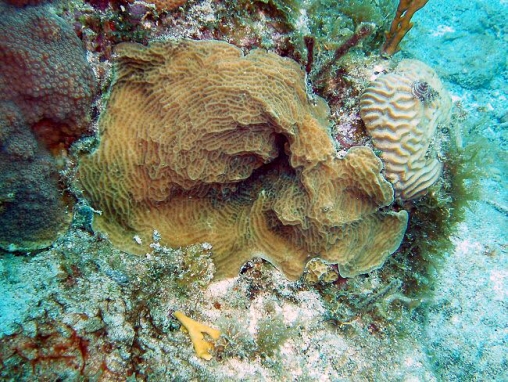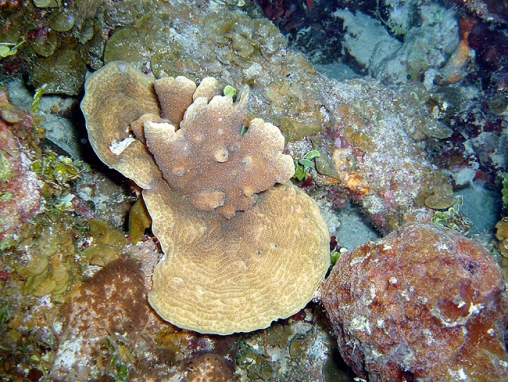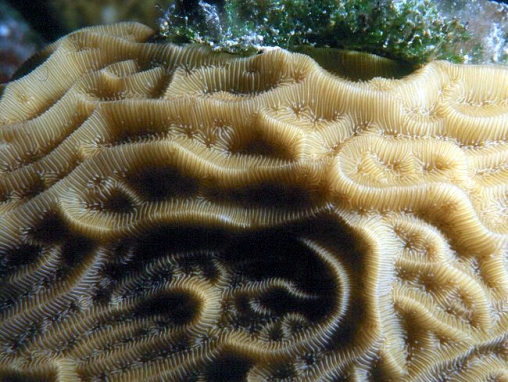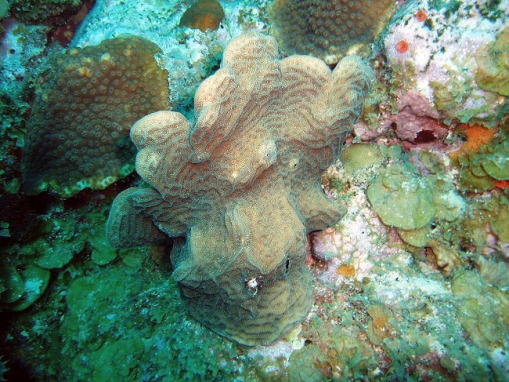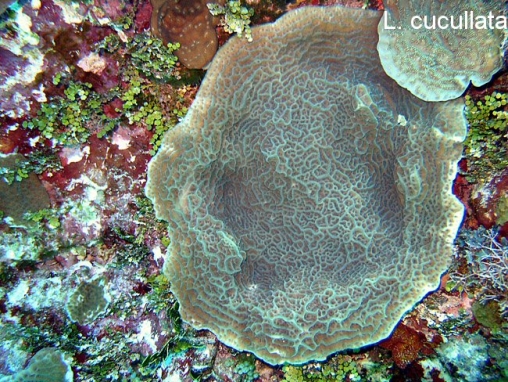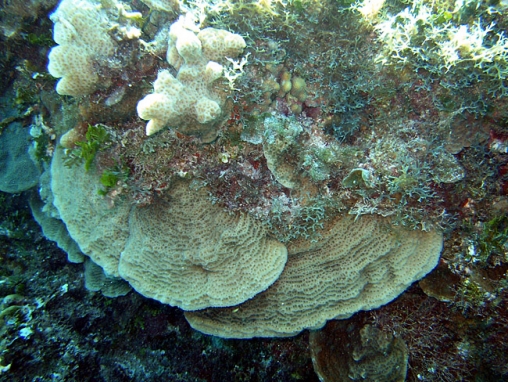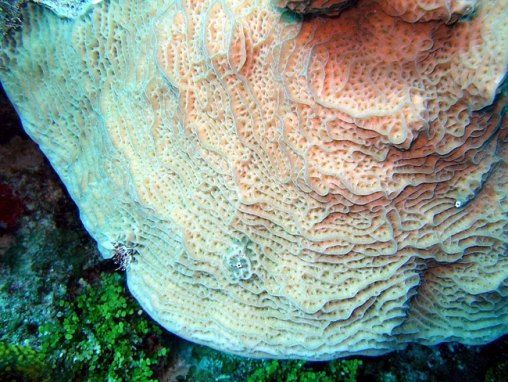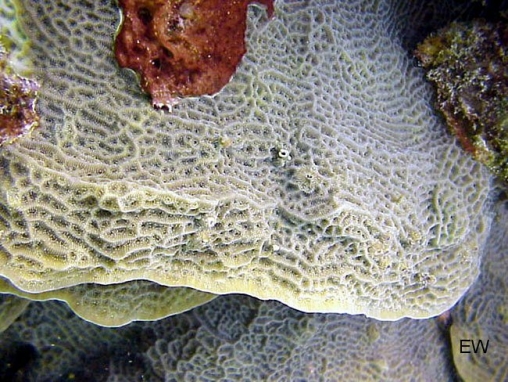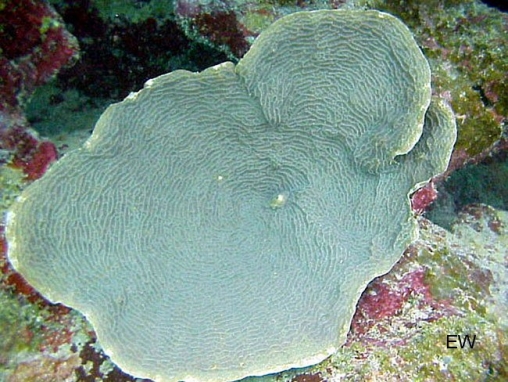Agaricia agaricites
Commonly assigned to the genus Undaria.
Colonies of this species are a mixture of encrusting sheets, thick leaves or other irregular projections and flat plates. Calices occur usually on both sides of vertical projections, though the plates are not bifacial. Colonies usually begin growth as an encrusting plate, though leaves and vertical projections become clear from an early age.
Corallites may occur in long meandroid rows (concentric on horizontal plates) but on most colonies there are areas where each corallite is individual (polygonal and monocentric) with angular walls. Ridge tops are pointed.
There are several forms of this species, which previously have had different names, and some of which may yet be found to be valid. Agaricia danae is a name for colonies which are mainly thick, vertical plates or projections (Figs 1, 3, 7). Agaricia purpurea LeSueur 1820 is the name for plates which have a glossy or marbelled appearance (Figs 8, 9, 10). Agaricia crassa Verrill, 1901 is illustrated on one photo (Fig 9) where it is the stubby, branching form.
Corallites may occur in long meandroid rows (concentric on horizontal plates) but on most colonies there are areas where each corallite is individual (polygonal and monocentric) with angular walls. Ridge tops are pointed.
There are several forms of this species, which previously have had different names, and some of which may yet be found to be valid. Agaricia danae is a name for colonies which are mainly thick, vertical plates or projections (Figs 1, 3, 7). Agaricia purpurea LeSueur 1820 is the name for plates which have a glossy or marbelled appearance (Figs 8, 9, 10). Agaricia crassa Verrill, 1901 is illustrated on one photo (Fig 9) where it is the stubby, branching form.
